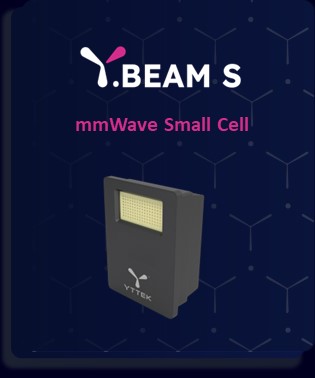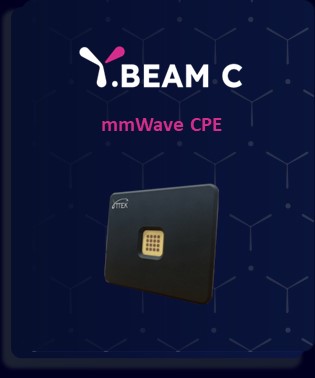Y.BEAM S, Y.BEAM C
Millimeter wave (mmWave) small cells and Customer Premises Equipment (CPE) are essential components of modern wireless communication networks, particularly in the context of 5G and beyond
mmWave small cells and CPE are integral components of 5G and beyond networks, working together to deliver high-speed, low-latency wireless connectivity to users in urban areas and other locations with high demand for data-intensive services. Small cells enhance network capacity, while mmWave CPE devices provide last-mile connectivity to customers, enabling them to access high-speed broadband services.
mmWave Small Cell, mmWave CPE
Y.BEAM S
The mmWave small cell is to enhance the capacity and
coverage of wireless networks, offloading traffic from
macrocells (larger cell towers) in areas with high user density.
They are crucial for delivering high-speed data services,
low latency, and support for emerging technologies.
Because mmWave signals are easily blocked by obstacles.
Small cells often use beamforming technology to focus the signal
in specific directions, improving signal strength and reliability.
Y.BEAM C
In the context of mmWave and 5G, mmWave CPE is designed
to support high-speed broadband connections using mmWave
technology. mmWave CPE devices are typically installed on
rooftops, windows, or other locations with a line-of-sight to the
mmWave small cells or base stations. They require proper alignment
to ensure a reliable connection. It also provides an alternative to
wired broadband in areas lacking fiber or cable infrastructure.
m m W a v e S o l u t i o n
Series Model
YTFE0284N – 16 antenna array
YTFE0286N – 64 antenna array
YTFE0287N – 128 antenna array
NXP LA1224
- 28GHz 5G mmWave antenna array front-end module dedicatedly developed for the high-speed data conversion subsystem (HS-DCS) interface of NXP LA1224 Bonnyrigg platform. A internally integrates modulators, demodulators, up/down converters, and beam-formers.
Anokiwave’s ICs
A special extra low-cost and high-performance antenna array design to meet both high performance and different converge strict requirements of commercialization.
- Anokiwave beamformer IC
- Anokiwave up/down converter IC
S P E C I F I C A T I O N S
|
Item |
Spec. |
Remark |
|
Operation frequency |
26.5-29.5GHz | |
|
Antenna element |
16/64/128-element | |
|
EIRP/pol |
40/51/58 dBm | |
|
Polarization |
Linear |
Horizontal/Vertical |
|
Max scan range |
+/-60o |
For both Horizontal/Vertical |
|
Phase adjustment resolution |
5.6 degree |
|
|
Gain adjustment resolution |
0.5 dB |
|
|
Input frequency range |
Analog BB I/Q |
|
|
Beam switching time |
4 us |
|
|
Control interface |
SPI/GPIO | |
|
Duplex mode |
TDD | |
| Power Consumption |





